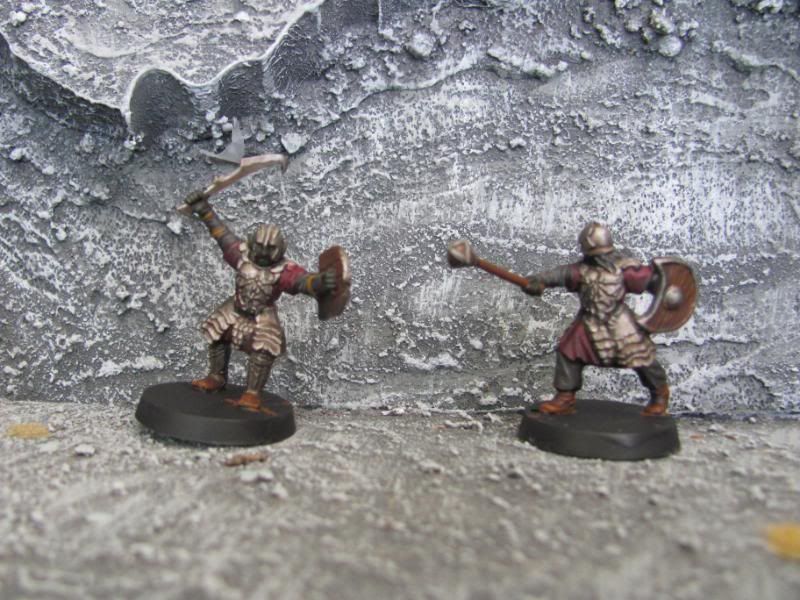Sticky Fingers - or really, sticky everything. Furniture varnish (or whatever Army Painter's Quickshade is) is sticky stuff and with all the dipping, shaking, and touchup you have to do you're bound to get it somewhere you don't want it. Unfortunately, the only way you can clean it up is with paint thinner. Soap and hot water ain't got nothin' fer it.
Shaking it off - Part of the process of proper dipping involves shaking the dipped model - preferably against newspaper or an old plastic tarp - to remove excess dip. I've come to dread this stage because inevitably a model or two will slip out of the pliers I use to dip them and either break or get covered in dirt and debris as it goes sailing off into the garage. I'm sure somewhere in there there's a joke about shaking it too much. . .
But the most aggravating thing about dipping only happens at the very end of the process - making it more than merely aggravating. Depending on the project it can be soul-crushing, as you find your finished models transformed by. . .
DULLCOTE FROST
That's right, that wicked intersection of Testors Dullcote spray and airflow that takes you from nearly completed model to useless garbage in 15 minutes of drying time. Its not Testors' fault. Any matte spray can give you the effect. Dullcote is just a really popular, and effective brand.
No, no, the evil twin in this dastardly duo air. A cool breeze, a workstation fan, even just blowing on the miniature will do it. And Dullcote reeks of alcohol, so spraying the stuff indoors can be problematic - unless you want to incur the enmity of the rest of the inhabitants of your house as you drive them outdoors.
Take a look at the picture below:
Here you have two identical models, dipped and dullcoted on different days. One came out perfect, the other looks like he's been riding the shelf in the game store for years and has collected the hoar of ages on his shoulders. Its enough to make a grown man cry. Not me, though. . .uh, some other grown man. . .
Anyway, no need to fret anymore, for I have discovered a cure and its found on your supermarket shelf. Indeed, you might already have it in your pantry. I know I did!
That's right, olive oil spray. The kind us hippies spray in pans to prevent food from sticking. Regular olive oil would work too, but would probably be much messier and less convenient. Other spray oils would probably work as well. You can see Pam there in the picture. I don't know what goes into Pam, but olive oil is olive oil and it works really well so I've never tested anything else.
Take that ruined mini and spray it down on both sides. It doesn't take a lot, but you want it coated for best results. I recommend doing it over the sink for easy cleanup.
Once you've coated the model, rub it down with a soft cloth or shammy. You can just use your fingers, but a cloth will allow you to easily get into the nooks and crannies. You'll see the color start to return immediately. You'll also get that glossy shine back - like before you sprayed it.
At this point, you might decide, "screw Dullcoting it. I'll take the shine over frost," and I wouldn't blame you. After all, there's nothing like rework for taking the joy out of a task. However, you can absolutely re-apply Dullcote once the oil has a day to dry, and it will work as intended.
The scenario above has happened to me many times. Discovering this fix was a life saver for me. I hope you find it helpful too.
Oh, and I've got all the Morranons dipped and ready to re-dullcote - once I spend an evening oiling them up.













